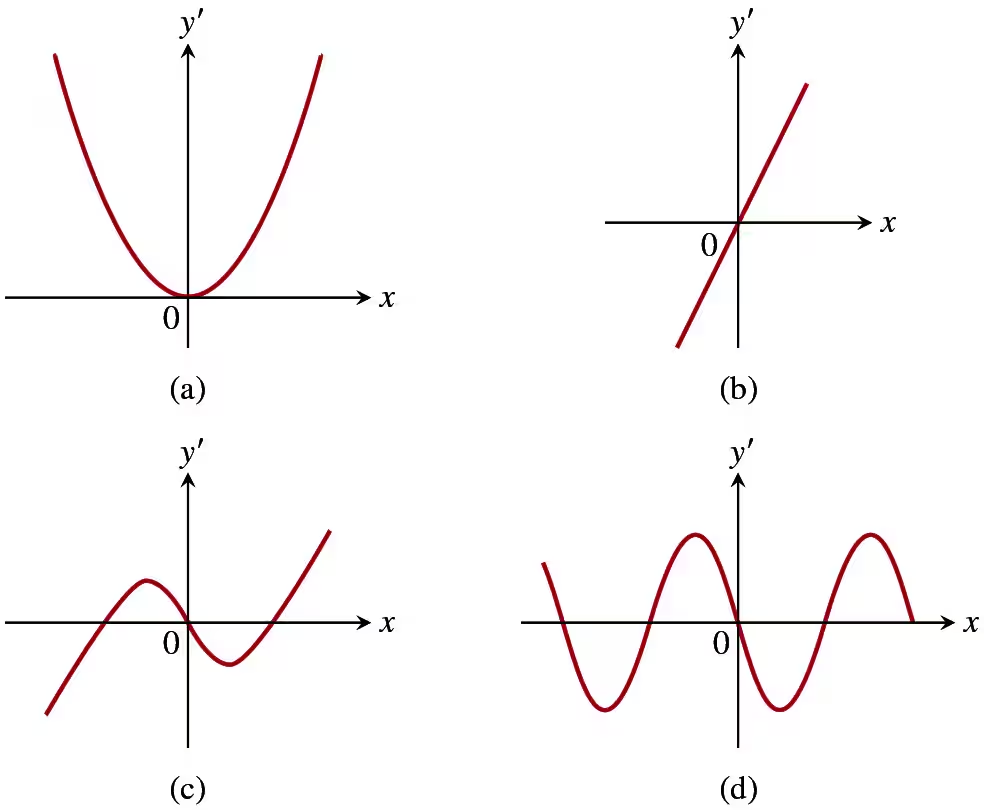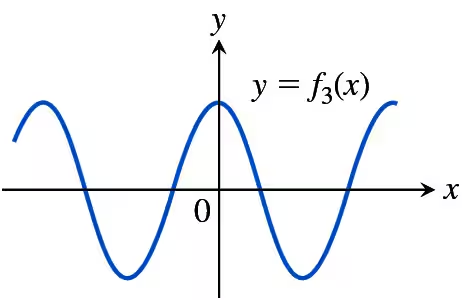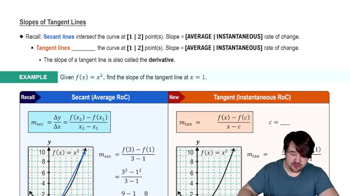For x < 0, what is f′(x)?
Table of contents
- 0. Functions7h 54m
- Introduction to Functions16m
- Piecewise Functions10m
- Properties of Functions9m
- Common Functions1h 8m
- Transformations5m
- Combining Functions27m
- Exponent rules32m
- Exponential Functions28m
- Logarithmic Functions24m
- Properties of Logarithms36m
- Exponential & Logarithmic Equations35m
- Introduction to Trigonometric Functions38m
- Graphs of Trigonometric Functions44m
- Trigonometric Identities47m
- Inverse Trigonometric Functions48m
- 1. Limits and Continuity2h 2m
- 2. Intro to Derivatives1h 33m
- 3. Techniques of Differentiation3h 18m
- 4. Applications of Derivatives2h 38m
- 5. Graphical Applications of Derivatives6h 2m
- 6. Derivatives of Inverse, Exponential, & Logarithmic Functions2h 37m
- 7. Antiderivatives & Indefinite Integrals1h 26m
- 8. Definite Integrals4h 44m
- 9. Graphical Applications of Integrals2h 27m
- 10. Physics Applications of Integrals 3h 16m
- 11. Integrals of Inverse, Exponential, & Logarithmic Functions2h 34m
- 12. Techniques of Integration7h 41m
- 13. Intro to Differential Equations2h 55m
- 14. Sequences & Series5h 36m
- 15. Power Series2h 19m
- 16. Parametric Equations & Polar Coordinates7h 58m
2. Intro to Derivatives
Derivatives as Functions
Problem 3.2.29
Textbook Question
Graphs
Match the functions graphed in Exercises 27–30 with the derivatives graphed in the accompanying figures (a)–(d).


 Verified step by step guidance
Verified step by step guidance1
Observe the graph of the function y = f₃(x). It is a sinusoidal wave with alternating peaks and troughs, indicating periodic behavior. The derivative of this function will represent the slope of the tangent line at each point on the curve.
Identify the key features of the graph of y = f₃(x): the slope is zero at the peaks and troughs (where the graph changes direction), and the slope is steepest at the midpoints between peaks and troughs.
Match these features to the derivative graphs (a)–(d). The derivative graph should cross the x-axis at the points where the original function has peaks and troughs (since the slope is zero there). It should also have maximum and minimum values where the original function has the steepest slopes.
Compare the periodicity of the original function to the derivative graphs. The derivative graph should have the same periodicity as the original function, but it may be shifted in phase.
Based on these observations, the derivative graph that matches y = f₃(x) is graph (d), as it exhibits the correct periodicity, zero crossings, and amplitude changes corresponding to the slopes of the original function.
 Verified video answer for a similar problem:
Verified video answer for a similar problem:This video solution was recommended by our tutors as helpful for the problem above
Video duration:
4mPlay a video:
Was this helpful?
Key Concepts
Here are the essential concepts you must grasp in order to answer the question correctly.
Derivative and Slope
The derivative of a function at a point is the slope of the tangent line to the graph of the function at that point. It provides information about the rate of change of the function. For example, if the derivative is positive, the function is increasing at that point, while a negative derivative indicates a decreasing function.
Recommended video:

Slopes of Tangent Lines
Critical Points and Derivative Sign Changes
Critical points occur where the derivative of a function is zero or undefined, indicating potential local maxima, minima, or points of inflection. By analyzing the sign changes of the derivative around these points, one can determine the nature of these critical points, such as whether they are peaks, troughs, or inflection points.
Recommended video:

Critical Points
Graphical Interpretation of Derivatives
Graphically, the derivative of a function can be visualized as a new graph that represents the slope of the original function at each point. For instance, a quadratic function's derivative is linear, and a cubic function's derivative is quadratic. Understanding this relationship helps in matching functions with their derivatives by observing the shapes and behaviors of their graphs.
Recommended video:

Graphical Applications of Exponential & Logarithmic Derivatives: Example 8
Related Videos
Related Practice
Textbook Question
139
views


